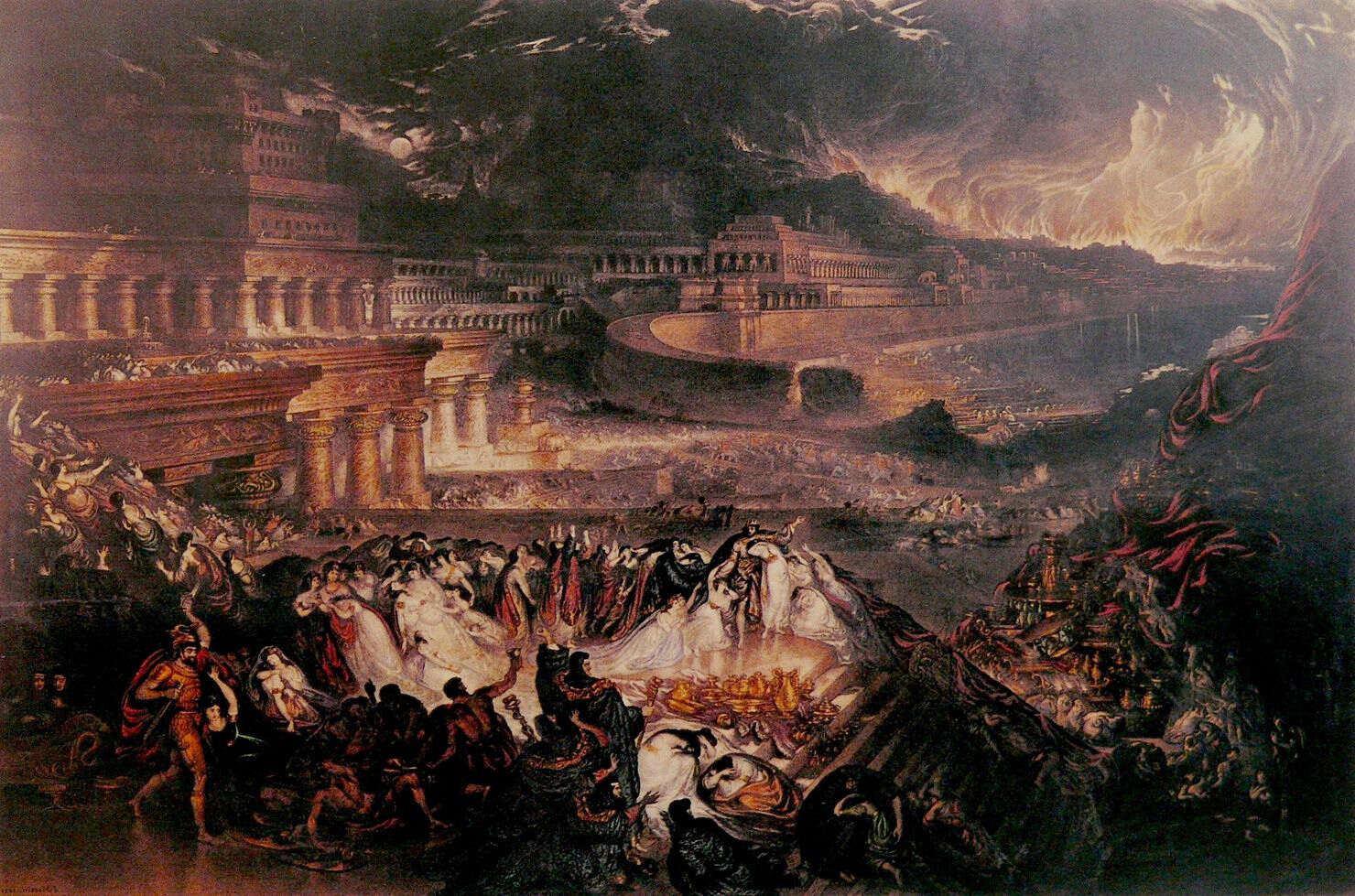
The Battle of Nineveh stands as a pivotal moment in ancient history, marking the end of the Assyrian Empire. This clash, fought in 612 BC, saw the combined forces of the Babylonians, Medes, and Scythians lay siege to the mighty city of Nineveh. Why is this battle so significant? It symbolizes the fall of one of the most powerful empires of its time and the rise of new powers in the region. The battle's outcome reshaped the political landscape of the ancient Near East. From strategic maneuvers to legendary leaders, the Battle of Nineveh offers a treasure trove of historical insights. Ready to dive into 40 fascinating facts about this epic confrontation? Let's get started!
Key Takeaways:
- The Battle of Nineveh in 612 BC marked the end of the powerful Assyrian Empire, showing the impact of alliances, military tactics, and the role of geography in shaping historical events.
- The fall of Nineveh had far-reaching consequences, leading to the rise of the Neo-Babylonian Empire and serving as a cautionary tale about the impermanence of power and the importance of alliances in ancient warfare.
The Battle of Nineveh: A Turning Point in History
The Battle of Nineveh, fought in 612 BC, was a significant event that marked the end of the Assyrian Empire. This battle saw the combined forces of the Babylonians, Medes, and Scythians lay siege to the Assyrian capital, Nineveh. Here are some fascinating facts about this pivotal moment in ancient history.
-
The Assyrian Empire was one of the most powerful empires in the ancient Near East, known for its military prowess and architectural achievements.
-
Nineveh, the Assyrian capital, was one of the largest cities in the world at the time, boasting impressive walls and palaces.
-
The combined forces of the Babylonians, Medes, and Scythians were motivated by a common goal: to overthrow the oppressive Assyrian rule.
-
King Sinsharishkun was the last ruler of the Assyrian Empire, and he led the defense of Nineveh during the siege.
The Siege and Fall of Nineveh
The siege of Nineveh was a brutal and prolonged conflict that ultimately led to the city's downfall. The following facts shed light on the events that transpired during this critical period.
-
The siege lasted for approximately three months, from May to August 612 BC.
-
The Babylonians, led by King Nabopolassar, played a crucial role in the siege, providing both military and logistical support.
-
The Medes, under the leadership of King Cyaxares, were instrumental in breaching Nineveh's formidable defenses.
-
The Scythians, a nomadic warrior people, contributed their cavalry and archery skills to the allied forces.
-
The Tigris River, which flowed near Nineveh, was diverted by the attackers to weaken the city's defenses.
-
The walls of Nineveh, which were up to 100 feet high and 50 feet thick, were eventually breached by the relentless assault.
The Aftermath and Legacy
The fall of Nineveh had far-reaching consequences for the ancient world. The following facts highlight the impact of this historic event.
-
The destruction of Nineveh marked the end of the Assyrian Empire, which had dominated the Near East for centuries.
-
The Babylonians and Medes divided the former Assyrian territories between themselves, leading to the rise of the Neo-Babylonian Empire.
-
The fall of Nineveh is often seen as a turning point in ancient history, signaling the end of one era and the beginning of another.
-
The city of Nineveh was left in ruins and was never fully rebuilt, serving as a stark reminder of the empire's downfall.
-
The Battle of Nineveh is mentioned in several ancient texts, including the Bible, where it is described as a divine punishment for the Assyrians' sins.
Cultural and Historical Significance
The Battle of Nineveh has left a lasting legacy in both historical and cultural contexts. These facts explore its enduring significance.
-
The battle is depicted in various works of art and literature, reflecting its importance in ancient history.
-
Archaeological excavations at the site of Nineveh have uncovered valuable artifacts and inscriptions that provide insights into the battle and the Assyrian Empire.
-
The fall of Nineveh is often studied by historians as a classic example of the rise and fall of empires.
-
The battle has inspired numerous historical novels and films, bringing the dramatic events to life for modern audiences.
-
The story of Nineveh's fall serves as a cautionary tale about the dangers of hubris and the impermanence of power.
Military Tactics and Strategies
The Battle of Nineveh showcased various military tactics and strategies that were employed by both the attackers and defenders. These facts delve into the military aspects of the battle.
-
The Assyrians were known for their advanced military techniques, including the use of siege engines and chariots.
-
The Babylonians and Medes utilized psychological warfare, spreading rumors and propaganda to demoralize the Assyrian defenders.
-
The attackers employed a scorched-earth policy, destroying crops and infrastructure to weaken Nineveh's ability to sustain itself.
-
The diversion of the Tigris River was a strategic masterstroke that undermined Nineveh's defenses and contributed to its eventual fall.
-
The use of combined arms, with infantry, cavalry, and archers working together, was a key factor in the success of the allied forces.
Key Figures in the Battle
Several key figures played pivotal roles in the Battle of Nineveh. These facts highlight the contributions and actions of these individuals.
-
King Sinsharishkun, the last Assyrian ruler, fought valiantly to defend his capital but ultimately perished in the battle.
-
King Nabopolassar of Babylon was a skilled strategist who orchestrated the siege and coordinated the efforts of the allied forces.
-
King Cyaxares of the Medes was a formidable military leader whose forces played a crucial role in breaching Nineveh's defenses.
-
The Scythian chieftains, though less well-known, provided essential support with their cavalry and archery skills.
-
The Assyrian generals and soldiers displayed remarkable bravery and resilience, even in the face of overwhelming odds.
The Role of Geography
Geography played a significant role in the Battle of Nineveh. These facts explore how the physical landscape influenced the outcome of the conflict.
-
Nineveh was strategically located on the eastern bank of the Tigris River, providing natural defenses and access to water.
-
The surrounding terrain, including hills and plains, affected the movement and deployment of troops during the siege.
-
The attackers' ability to divert the Tigris River was a critical factor in weakening Nineveh's defenses.
-
The city's location made it a prime target for the Babylonians and Medes, who sought to control the region.
-
The harsh climate and weather conditions during the siege added to the challenges faced by both the attackers and defenders.
The Battle's Impact on Future Conflicts
The Battle of Nineveh had a lasting impact on future conflicts and military strategies. These facts highlight its influence on subsequent battles and wars.
-
The tactics and strategies employed during the siege of Nineveh were studied and adapted by later military leaders.
-
The fall of Nineveh demonstrated the effectiveness of alliances and combined forces in achieving military objectives.
-
The battle underscored the importance of psychological warfare and propaganda in undermining enemy morale.
-
The use of engineering and environmental manipulation, such as diverting rivers, became a common tactic in future sieges.
-
The Battle of Nineveh remains a key case study in military history, illustrating the complexities and dynamics of ancient warfare.
The Final Stand
The Battle of Nineveh marked a pivotal moment in ancient history. This clash between the Neo-Assyrian Empire and the Babylonian-Median alliance led to the fall of one of the most powerful empires of its time. The battle's outcome reshaped the political landscape of the Near East, paving the way for new powers to rise. The siege tactics, military strategies, and sheer determination displayed by both sides highlight the complexities of ancient warfare. Understanding this battle provides insight into the dynamics of power, the fragility of empires, and the relentless pursuit of dominance. As we reflect on these facts, it becomes clear how significant events like the Battle of Nineveh continue to influence our understanding of history. This epic confrontation remains a testament to the ever-changing nature of human civilization.
Frequently Asked Questions
Was this page helpful?
Our commitment to delivering trustworthy and engaging content is at the heart of what we do. Each fact on our site is contributed by real users like you, bringing a wealth of diverse insights and information. To ensure the highest standards of accuracy and reliability, our dedicated editors meticulously review each submission. This process guarantees that the facts we share are not only fascinating but also credible. Trust in our commitment to quality and authenticity as you explore and learn with us.


